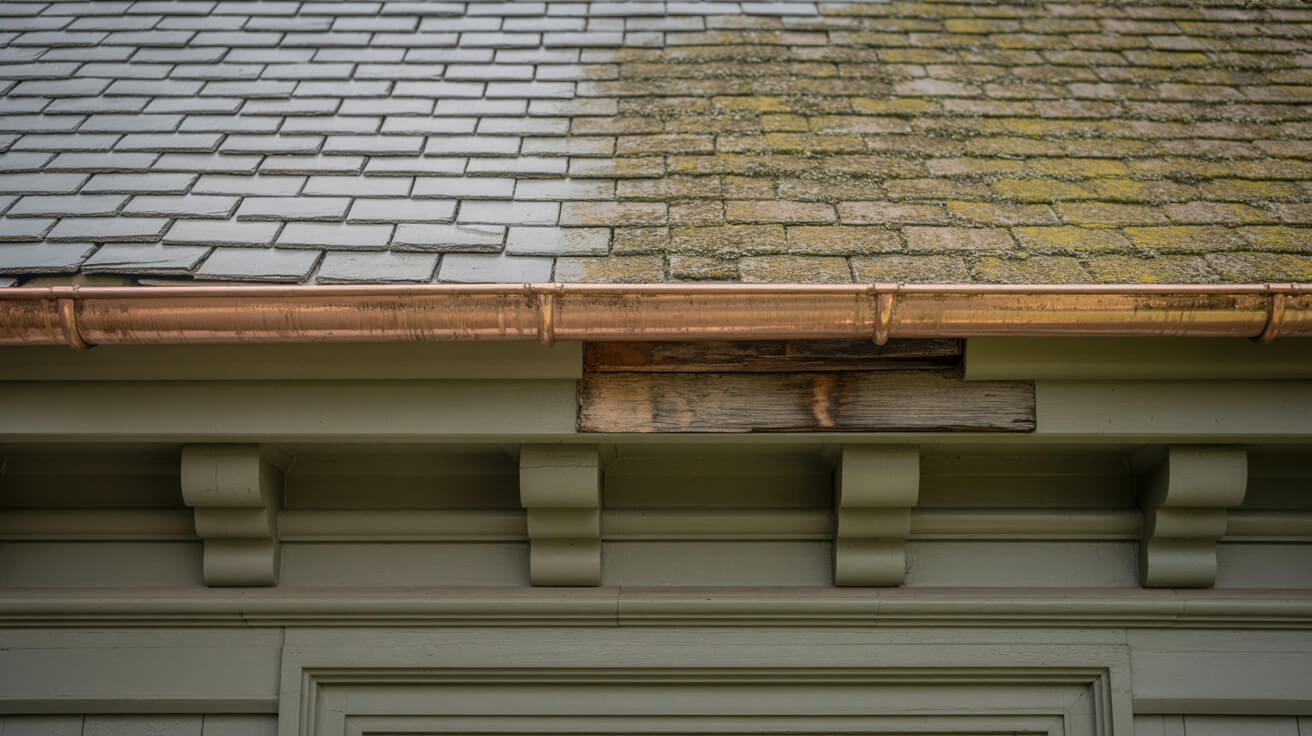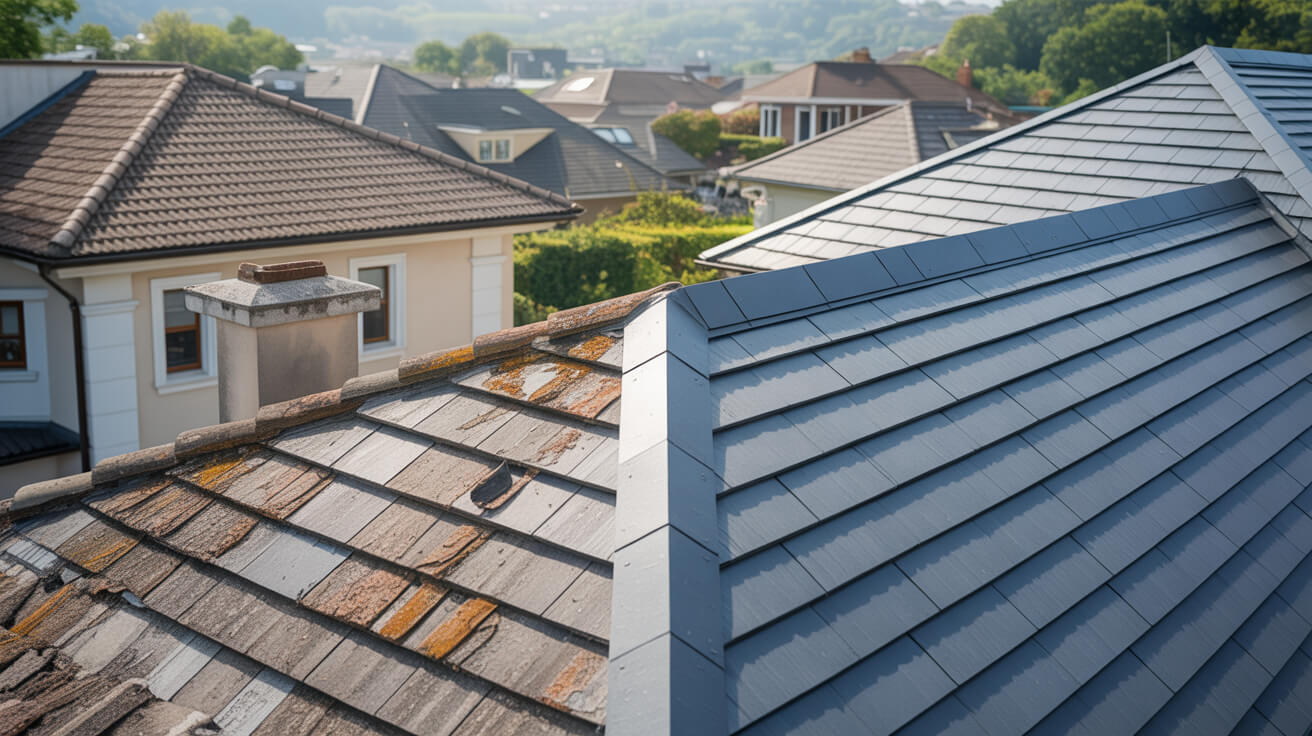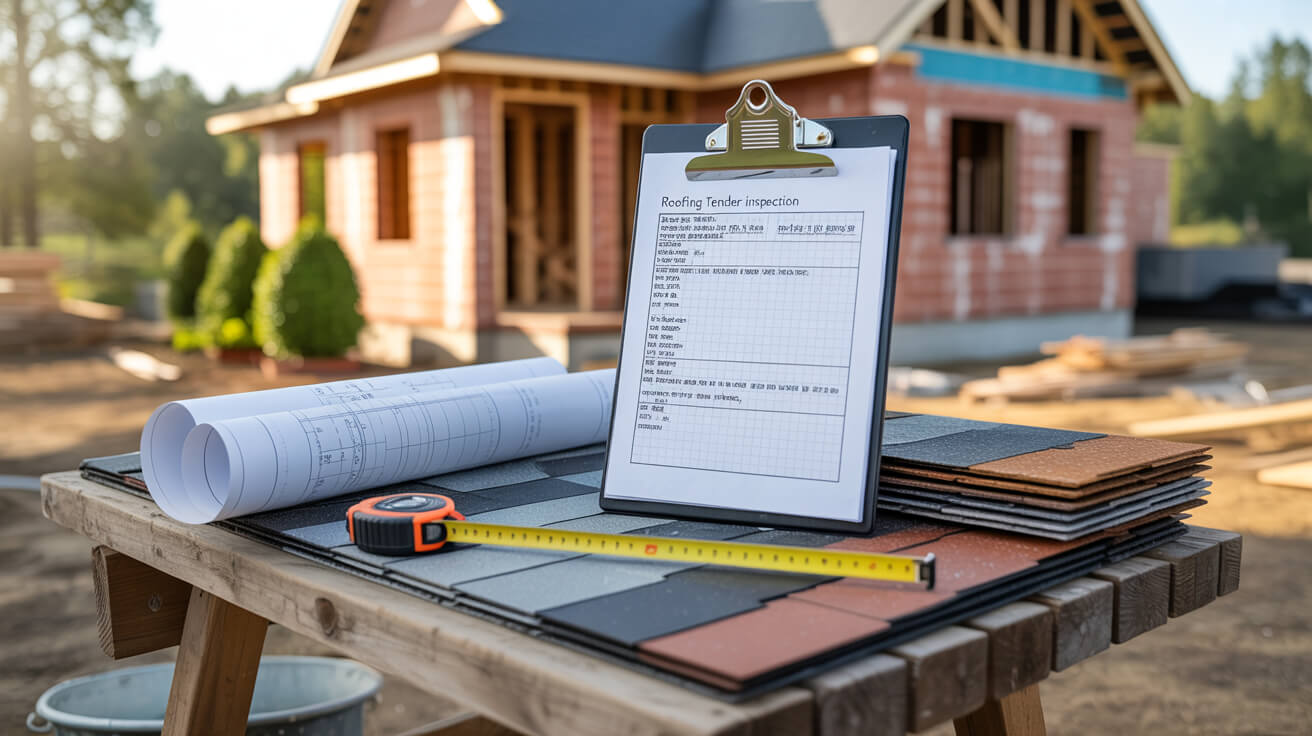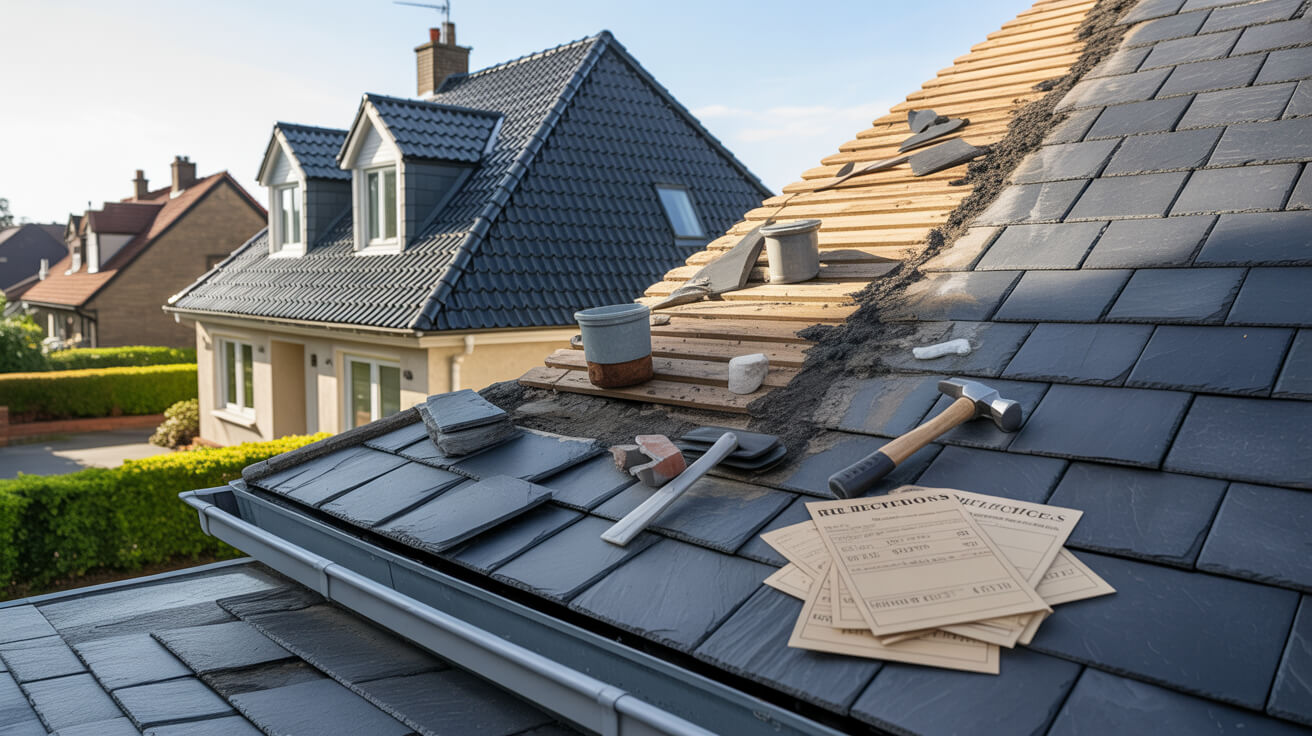 The Big Mistake Heritage Homeowners Make With Roofing Contractors
The Big Mistake Heritage Homeowners Make With Roofing Contractors

Introduction: Why Heritage Roofing Challenges Demand Immediate Attention
Heritage roofing isn’t simply about repairs—it’s about protecting your property’s value, its aesthetics, and the deeper story it tells. Too often, owners face avoidable costs and stress because early signs are dismissed or misread. The wrong contractor, an overlooked damp patch, a shortcut on materials—all can set off cascading issues. Regulatory oversight doesn’t exist to frustrate; it exists to shield you from major loss.
Main challenges include:
- Hidden water ingress threatening period timber.
- Shifting tiles and disrupted drainage from non-matching repairs.
- Increased insurance scrutiny after “routine” jobs are botched.
There’s little tolerance for mistakes with a heritage home’s roof. A small oversight today can become a structural overhaul tomorrow—one that is neither cheap nor easy to resolve. Homeowners need solutions rooted in prevention, regulation, and expertise.
If your roof is listed, under conservation, or simply exceeding 70 years—make proactive, informed choices. Early intervention isn’t just about risk—it’s about securing peace of mind and preserving your investment.
Ready for facts, not hype? Arrange a heritage roof assessment with JG Leadwork and Roofing and avoid the false economies that undo decades of heritage value.
What Is Heritage Roofing and Why Must It Demand Specialized Conservation?
Heritage roofing is the art and science of preserving structures that stand as local or national assets. Authenticity isn’t just a visual effect; it’s engineered from the substrate up.
What Sets Heritage Roofing Apart?
- Materials: Think Welsh or Cornish slate, handmade tiles, lime mortars, and milled lead. They breathe and move with your building.
- Methods: Traditional nailing, historic layering techniques, custom bossed leadwork, all guided by SPAB and BS5534.
- History: Centuries of weathering and settlement mean repairs must respect existing timbers, brickwork, and joinery.
Modern roofs can accommodate off-the-shelf solutions. Heritage structures demand conservation skills—a blend of building physics and historical insight. One incorrect choice—swapping lime mortars for cement, replacing hand-shaped tiles with algorithmically mass-produced ones—can create chronic moisture issues, invalidate surveys, or lower property value.
The mechanic is evidence-driven restoration—not cosmetic repair. The aim is longevity, not patchwork. This field rewards thoroughness, with the only shortcut leading to eventual regret.
Curious whether your roof is losing value with every passing winter? Enquire how JG Leadwork and Roofing integrates conservation, compliance, and traditional methodology on every job.
How Do Compliance Failures Lead to Costly, Long-Term Mistakes?
The most expensive roofing mistakes rarely announce themselves in the first year. Regulatory compliance—BS5534, Part L, SPAB protocols—safeguards more than lawful standing; it preserves the structural logic of the building and the ability to insure, maintain, and eventually sell the property.
Hidden Dangers of Non-Compliance
- Incompatible underlays: Trapped moisture, unseen rot.
- Cheap fixings: Disparate expansion rates cause tile cracks, leaks.
- Modern mortars: Cement on historic structures causes expansion damage.
- Consent for listed buildings: Required, not optional.
What’s at stake?
- Mortgage refusals.
- Loss of insurability.
- Compulsory corrective orders from local authorities.
- Escalating repair costs when failed materials force full roof strip and rebuild within a decade.
One decision—to skip compliance, to “make do”—can cascade into ineligibility for grants, insurance, even legal action if public safety or conservation status is neglected.
Request a regulation review with JG Leadwork and Roofing to identify how your existing repairs may be placing your property at risk—or to prevent costly mistakes before work gets underway.

How Do Inexperienced Contractors Create Critical Risks for Heritage Roofs?
Roofing isn’t just about what’s visible from the street. Many contractors claim experience but lack conservation training or regulatory insight. Their work, while initially tidy, often fails under stress because the core factors in period construction were ignored.
Tell-Tale Signs of Unsuitable Contractors
- Lack of industry accreditations or relevant heritage project examples.
- Repairs that blend new cement with old lime mortars.
- Fast, “factory” nailing instead of graded historical methods.
- Opaque quoting or refusal to document material choices.
These are not small differences—they are the reason your roof remains secure or starts leaking the next season. Each shortcut multiplies risk, not only to physical structure and comfort but to mortgage approval, surveyor confidence, and property value. Recurring repairs, ongoing leaks, and disputes with insurers are all downstream effects of saving on the wrong skills.
Contractor selection in heritage work is forensic. Vet your experts; ask for evidence, prior project lists, written guarantees, and references for listed or conservation jobs.
Remove guesswork. JG Leadwork and Roofing is proud to provide credentials, written methods, and full compliance records upfront—including before/after documentation of conservation work.
What Are the Long-Term Financial and Structural Costs of Poor Roofing Practices?
Cutting costs or choosing unqualified contractors for heritage properties is a short-term gain, long-term regret.
Direct and Indirect Costs:
- Repeat callouts: Instead of a ten-year fix, you may pay for overlapping repairs every two to three years.
- Structural rot: Water trapped by incompatible mortars or inferior flashing can rot beams and joists—repairs that run five figures.
- Insurance issues: Claims denied if prior work doesn’t meet regulatory standards.
- Surveyor’s scrutiny: Future valuations can be slashed if buyers spot mismatched tiles or modern mortars on a conservation property.
Estimated Lifetime Cost Comparison
| Repair Strategy | Average 10-Year Outlay | Resale Value Impact |
|---|---|---|
| Standard Patchwork | £15,000 | -20% (high risk) |
| Heritage-Compliant Repairs | £8,700 | Full or +10% |
| JG Leadwork and Roofing | Full compliance, full documentation | Value protected, insurer-ready |
Every compliant, conservation-grade repair increases property stability, longevity, and valuation. Neglect or non-compliance, however slight, opens the door to spiraling costs and administrative headaches.
Maximize every pound invested. Ask about JG Leadwork and Roofing’s cost-transparent, compliance-led repair strategies before giving any green light.

How Can You Verify a Contractor’s Expertise and Ensure Compliance?
Due diligence saves both funds and frustration. Accept no ambiguity when your asset is heritage-class:
Contractor Verification Checklist
- Certification: Competent Roofer Scheme, TrustMark, local conservation registry.
- Evidence of historic conservation work: Prior projects, with photos and client references.
- Insurance: Policies covering listed, conservation, and period properties.
- Methodology: Written plans referencing relevant standards and listing consent procedures.
- Material sourcing: Proof of like-for-like tiles, slates, leadwork, and traditional mortars.
Open communication signals professional integrity. Quality heritage contractors explain material choices, invite documentation at every step, and avoid pushing for “fast wins.” Their value-add is full transparency—from costs to materials to regulatory engagement.
JG Leadwork and Roofing expects to be challenged. We provide credentials, work summaries, and regulatory references by default. Request a compliance portfolio and see heritage practice done right.

Problems on heritage roofs develop in silence. Absent ongoing assessment and proactive maintenance, small damp areas or “occasional” drips become major works.
Commonly Missed Issues
- Blocked, poorly detailed gutters: Lead to hidden water ingress and timber rot.
- Flashings not matched: Rapid leak paths at interfaces.
- Failed underlays: Condensation, energy loss, and timber decay.
- Material mismatch: Tiles or slates that look “close enough” destabilize the drainage and cause wicking into timbers.
Seasonal rains, cold snaps, and temperature swings are relentless on period roofs—especially when modern materials disrupt the original balance. Where reactive inspections dominate, minor defects snowball. Owners who act only at visible crisis—rather than by scheduling proactive checks—face the highest costs.
Proactive inspection with qualified heritage roofers uncovers weaknesses before the rain exposes them.
Guard the unseen. JG Leadwork and Roofing offers seasonal or annual inspection protocols—bringing deep heritage insight before risk evolves into reality.
Book Your Free Consultation With JG Leadwork and Roofing Today
New regulations, shifting weather, and the scarcity of true heritage skills make each year riskier for valuable properties. If mistakes, shortcut repairs, or uncertainty already shadow your property, rest assured: decisive action can still save both structure and heritage.
Key Advantages of Acting Now:
- Gain clarity: Know the actual state and compliance standing of your roof.
- Document your asset: Secure real, transferable guarantees and comprehensive repair records.
- Maximize value: Repairs done right—and proven—add equity and trust for buyers and insurers alike.
Stop risk before it matures. Request a complimentary, compliance-ready heritage survey by JG Leadwork and Roofing and discover what best-in-class conservation looks like—at no initial cost.
Frequently Asked Questions
What makes heritage roofing fundamentally different—and why is contractor selection a make-or-break decision?
Heritage roofing is more than a technical upgrade or patch—it’s an act of preservation that crossbreeds tradition, engineering, and legal stewardship. Your roof is not just a barrier against weather; it’s a historical testament, shaped by the craftsmanship, materials, and construction logic of its era. Unlike modern builds, every intervention on a heritage roof must honor conservation protocols, listed property laws, and architectural DNA.
The DNA of Authentic Heritage Roofing
- Materials Matter: Original slates, clay tiles, lime mortars, and code 5 or 6 lead don’t just preserve aesthetics; they manage moisture and thermal cycles in ways modern mass-market substitutes simply cannot.
- Conservation-Driven Workflows: Restoration means matching traditional joinery, hand-bossing lead, and detailing flashings and ridges in line with period blueprints. Conservation officers expect evidence, not promises.
- Invisible Consequences: Mismatched materials or synthetic mortars disrupt the building’s breathability, escalating decay and, often, prompting enforcement orders.
- Legal and Value Implications: In conservation areas or for listed roofs, missteps risk voiding insurance, triggering legal notices, and slicing your property value.
Choosing the wrong contractor isn’t just a temporary inconvenience—it’s a permanent fork in your home’s story. The right provider, such as JG Leadwork and Roofing, delivers not just repairs but assurance that every intervention aligns with regulatory expectations and architectural heritage. Knowledge, documentation, and tradition-anchored skill aren’t optional for these jobs—they are the job.
How do regulatory oversights and corner-cutting unleash threats to your property’s longevity?
Skipping or fudging compliance in heritage roofing is an invisible debt that compounds relentlessly. The day you accept a shortcut—a missing underlay, a “close enough” tile, or uncertified cement—you set off a slow-motion unraveling of your building’s value and its legal standing.
The Hidden Mechanics of Regulatory Drift
- Standards at Stake: British Standard BS5534, Part L, and SPAB best-practice aren’t technicalities—they are safeguards that protect against roof sag, water penetration, and wind uplift.
- Insurance & Mortgage Fallout: Insurers increasingly demand photographic proof and compliance documentation. Mortgage approvals can be delayed or denied if repairs show as non-conforming.
- Snowballing Damage: Uncertified flashings and quick-fix cement mortars channel moisture to unseen timbers. Decay is slow but devastating, only surfacing after surveys trigger expensive reworks.
- Enforcement Traps: Conservation areas and listed buildings give local authorities power to demand “undo and remediate” at your expense, which may triple the original outlay.
Every decision is a fork between peace of mind and slow-burning disaster. JG Leadwork and Roofing operates from a baseline of documented compliance, meaning every invoice, photo, and report can satisfy the most stringent authority or surveyor. When proper process is built in from the start, you avoid the retrospective scramble, unexpected costs, and friction with insurers that trap too many heritage owners.
What are the unmistakable signals of a contractor who lacks heritage expertise?
The gap between a reputable heritage roofer and a generalist shows up immediately in their approach, their paperwork, and—often—their discomfort with your questions. Untrained contractors overpromise and under-specify. Their quotes are vague, references patchy, and proposed timelines implausibly fast.
The Red Flags You Can Spot
- Evidence Avoidance: When a contractor resists showing council-approved work, or lacks verifiable photos of similar period properties, alarm bells should ring.
- Shortcut Language: Look for dismissive phrases—“it’s all the same really,” or “that old stuff’s not needed.”
- Documentation Weakness: Absence of method statements referencing BS5534, SPAB, or listed building protocols is a confident predictor of failure—delivering shortcuts that might “look right” but lack long lifespan.
- Guarantee Confusion: If their warranty is “trust us, it’s good,”—run. Serious operators spell out insurance backups, consent requirements, and project signoff processes up front.
Quality is visible in transparency, not just the final finish. JG Leadwork and Roofing empowers your selection process by supplying method statements cross-walked to standards, detailed portfolios of conservation jobs, and clear insurance positioning. You’re not asked to “take it on faith”; you see, ask, and verify before you decide.
Why do low-priced repairs and short-term fixes lead to expanding long-term burdens?
A “value” quote on a heritage roof often signals a transfer of risk from the contractor to you. By shaving margins—using second-tier tiles, skipping staged installation, or delegating work to less-experienced labor—unqualified providers bank on your inability to catch mistakes until it’s too late.
The Invisible Cost Curve
- Accelerated Decay: Subpar mortar, mismatched underlays, and modern adhesives create micro-leaks and condensation traps, which slowly rot substructures invisible until survey or resale.
- Administrative Drag: Insurance disputes, denied claims, ad-hoc repairs, and compliance enforcement multiply your touchpoints and cost per incident.
- Diminished Value: Surveyors for buyers, lenders, or insurers query every discrepancy between original and “repaired”—and discount accordingly.
- Lifetime Outlay: Historic England, in multi-property studies, notes that non-compliant patchworks rack up costs 2–3x higher than best-practice, conservation-driven projects over two decades.
Shortcuts amplify risks not just to the envelope of your roof but to your liquidity and peace of mind. With JG Leadwork and Roofing, every staged repair is future-focused, cost-optimized, and guaranteed to resist both weather and regulatory pressure—so your roof builds equity, not headaches.
How do you independently validate a heritage roofer’s competence and compliance?
Verifying expertise in heritage roofing means more than scanning digital portfolios or glossy brochures. Real oversight means relentless checking—and the best providers welcome it. Each of these points should be non-negotiable litmus tests:
Your Stepwise Validation Plan
- Certification: They must hold Competent Roofer Scheme membership and be able to produce actual certificates—no generic badges.
- Compliance Records: Request method statements that crosswalk every stage of the proposed repair to BS5534 and listed building consent procedures.
- Insurance Evidence: Demand proof of coverage tailored for heritage and listed sites, not just blanket contractor insurance.
- Reference Drilldown: Speak to previous listed property clients, not just generic “happy homeowners.”
- Documentation Culture: The provider should offer photos, before/during/after archives, and sign-off sheets to regulatory or conservation standards as standard.
JG Leadwork and Roofing supplies transparent, reference-rich, and documentation-heavy proposals—not only to win your trust, but to ensure your choices stand up to lender, insurer, and surveyor scrutiny. When you’re handed the keys at project completion, every regulatory loose-end is already tied.
How do subtle maintenance slip-ups and seasonal oversights escalate into major crises for heritage roofs?
Problems in heritage roofing rarely erupt: they accumulate in silence, nurtured by missed inspections, deferred repairs, and ambient neglect. Each small leak, drafting tile, or overlooked gutter multiplies vulnerability.
The Escalation Spiral
- Material Lifespan Compression: Annual check-ups missed? Condensation persists. Discoloration goes uninvestigated. Tile slips accumulate until their collective load accelerates failure.
- Environmental Surge: One harsh winter can convert a manageable issue into structural rot, mold blooms, or lost insulation, raising costs exponentially.
- Compliance Drift: Minor, unauthorized repairs can quietly stack up, leaving a property out of line with its listed status—a shock only at inspection, transfer, or claim time.
- Untracked Deterioration: Unchecked valleys fill with moss, batten ends rot behind fascias, flashings fatigue. The visible surface remains plausible—until a surveyor peels back the layers.
Resilience in heritage roofing isn’t defined by a single season but by the rhythm of proactivity. Our clients who lock in regular, conservation-driven reviews from JG Leadwork and Roofing—backed by documentation—see lower costs, quicker issue resolution, and reduced regulatory headaches. The roof may keep the rain out, but it’s the ongoing vigilance and skilled attention that keeps the value in.



